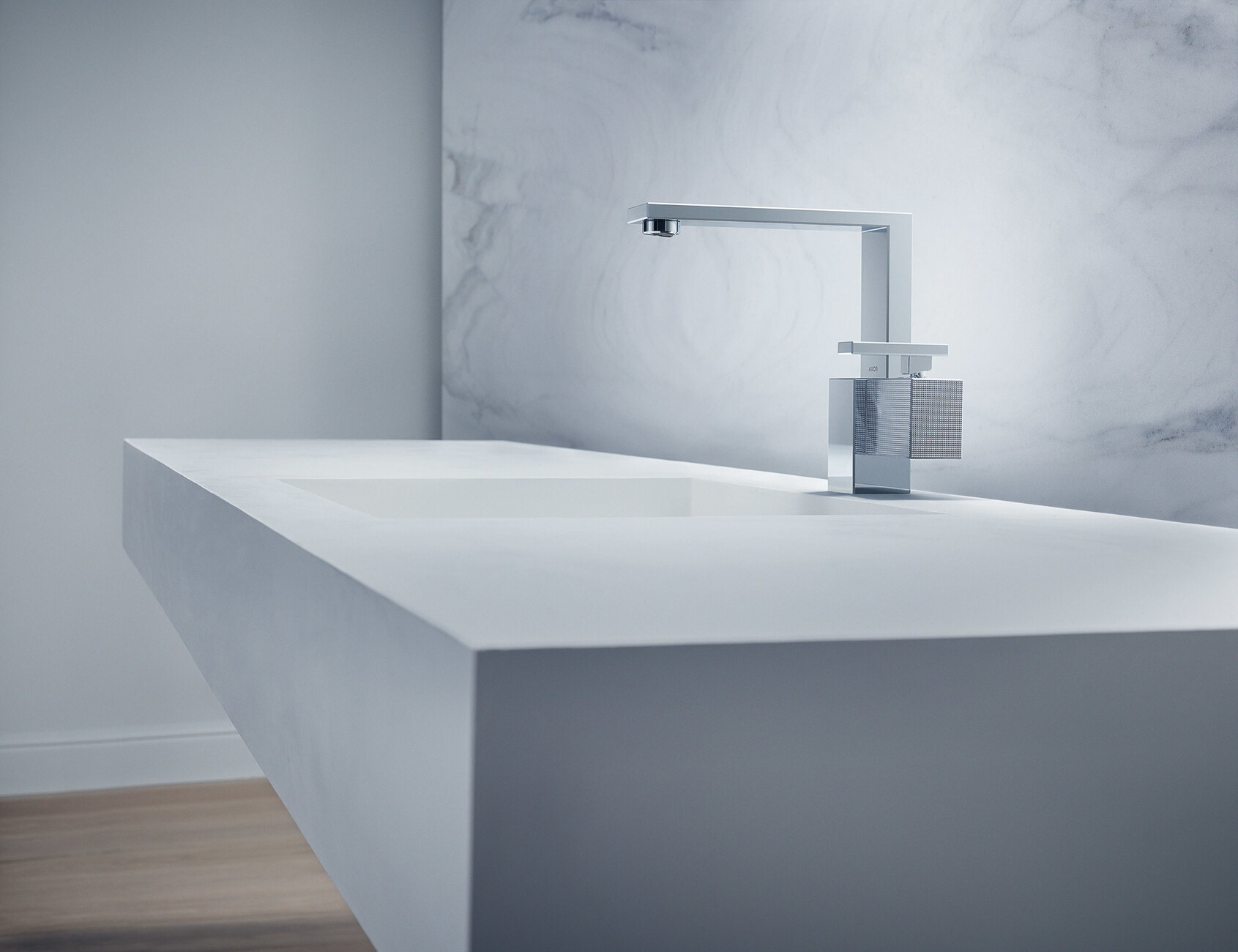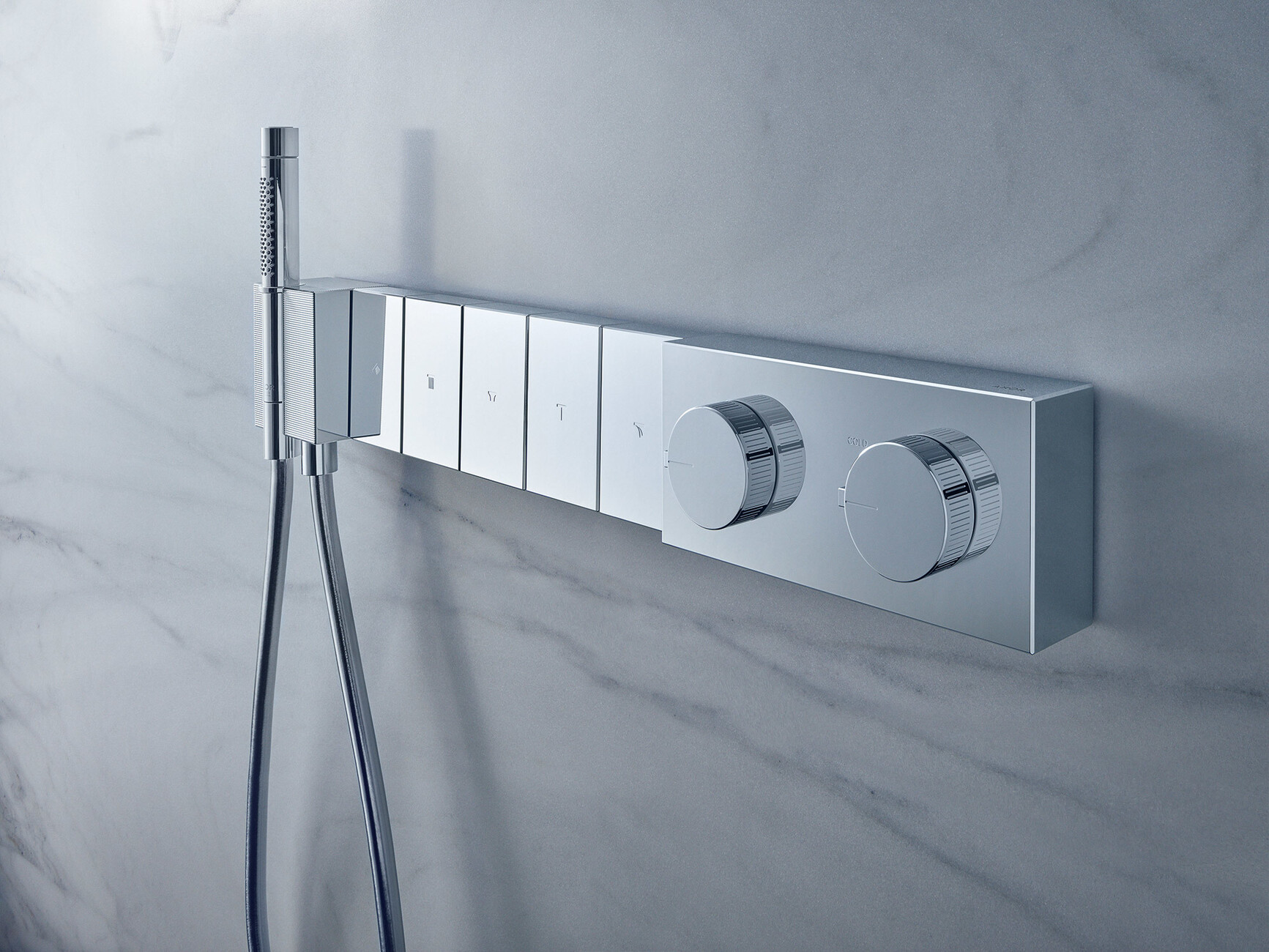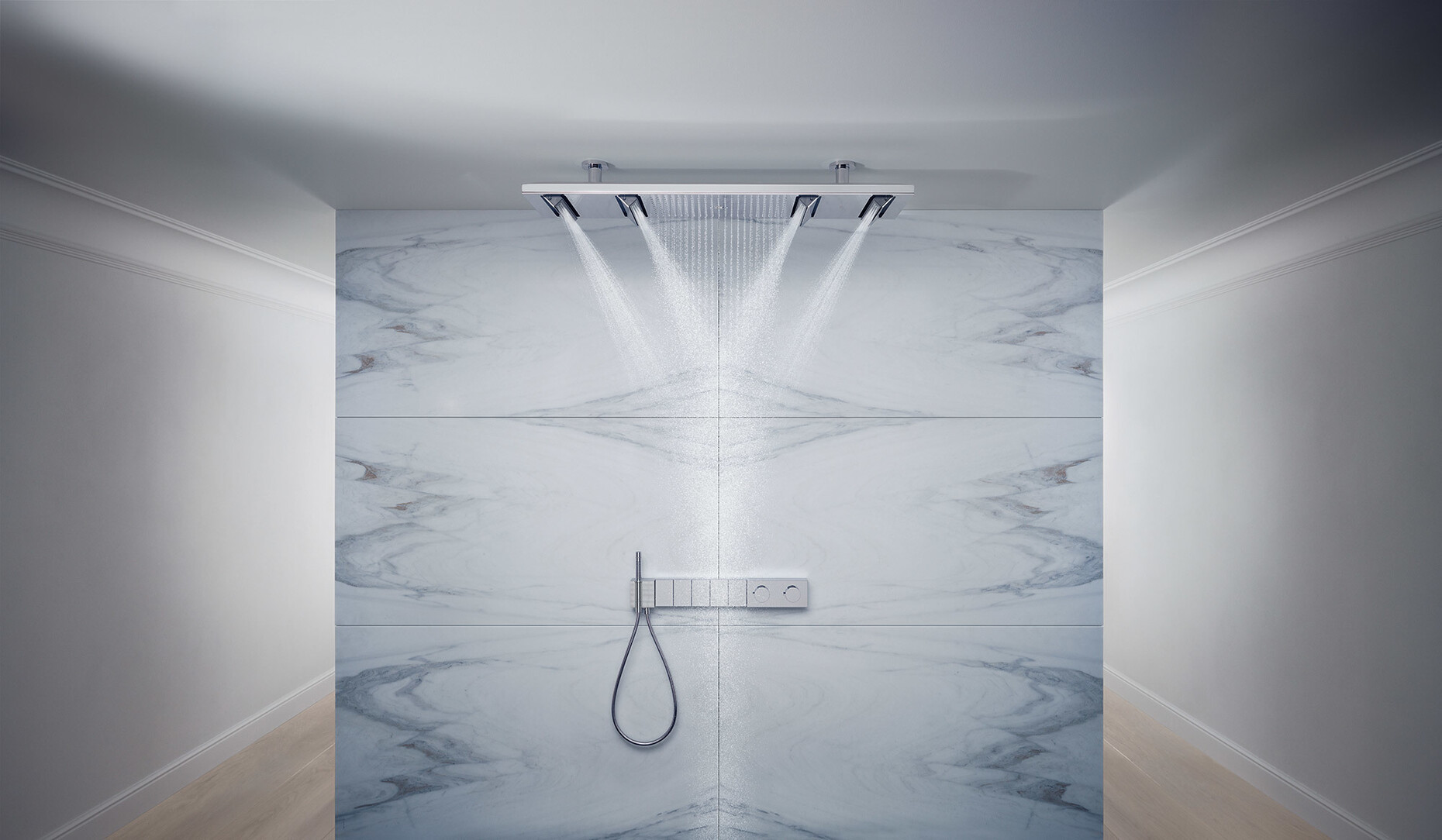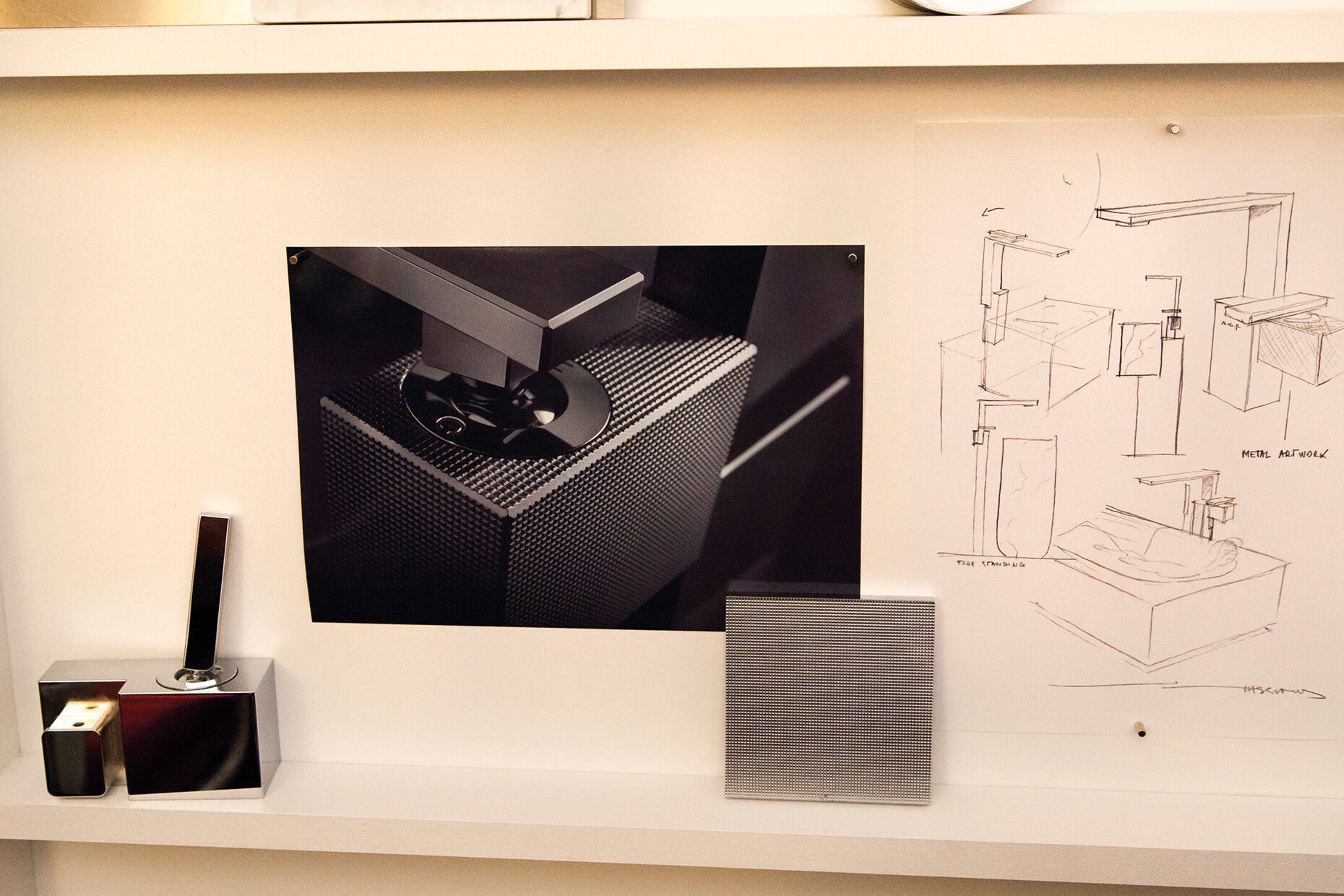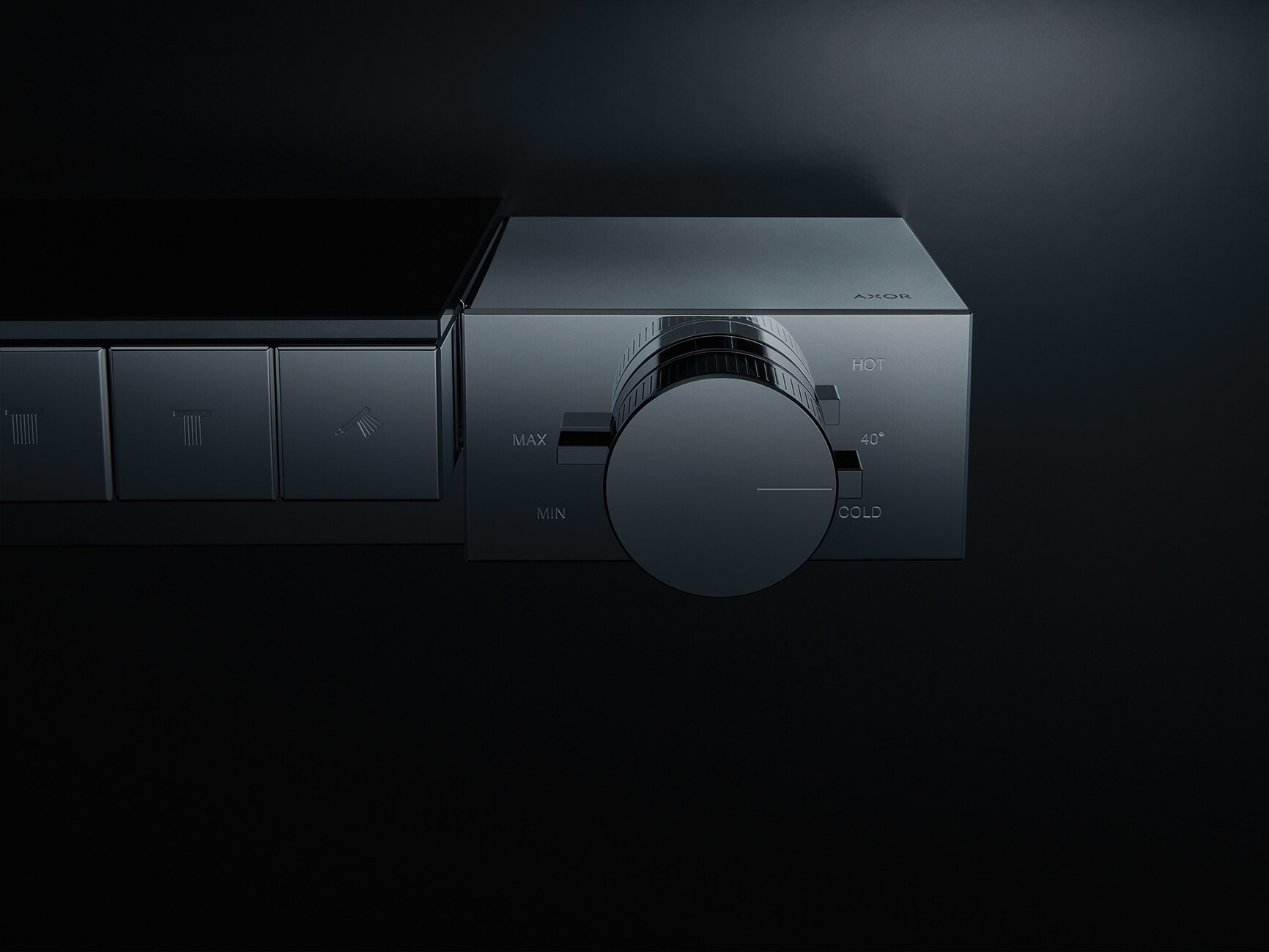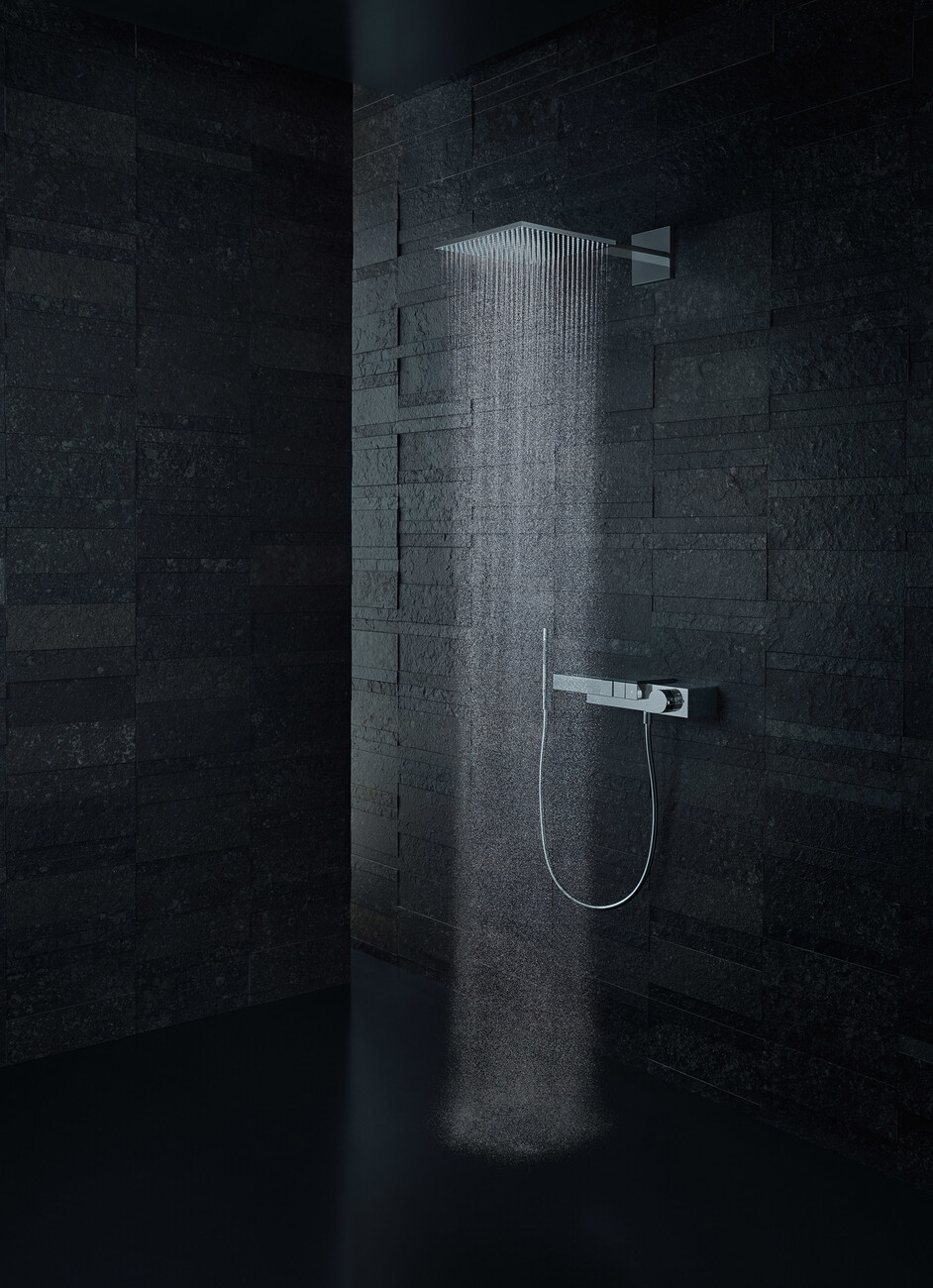Long-term investments
“I wanted to give architects and interior designers a vocabulary for telling the story they have in mind,” Jean-Marie Massaud remarks, commenting on the new bathroom faucet “AXOR Edge” he has masterminded for AXOR, the Hansgrohe Group’s design brand. His creation resembles precious metal bars stacked on top of each other, a constructivist sculpture of cuboids. A particularly striking feature: the ultra-flat metal surfaces of the collection and edges that do not meet at the accustomed 90-degree angle; rather they are separated by a tiny surface (known as a chamfer) sloping at a 45-degree angle. This design element not only reinforces the association with a gold bar, but above all lends the object an immense vividness.
“AXOR Edge” represents the continuation of a journey along an established route: From the outset the brand, which is based in Schiltach in the Black Forest region, has emphasized collaboration with leading international designers. Indeed, this aspect truly forms the DNA of a brand created 27 years ago by Hansgrohe, which has been producing bathroom fittings since 1901. The first collaboration was in 1994 with no less a name than Philippe Starck, who presented the AXOR engineers with what was initially a considerable challenge, as he opted for a joystick handle rather than the classic faucet lever. However, the engineers in the Black Forest, which has a long history of producing brilliant inventors and tinkerers, were not deterred by his idea. “From the start it seemed completely obvious to us that we would be listening to the designers in order to find solutions for their ideas rather than presenting them with a list of exact specifications, or telling them what is possible and what not,” says AXOR brand ambassador Michael Kiolbassa. And he recalls that to begin with the marketing people were anything but impressed by the new Starck fitting: “When we showed them the first sample, many of them argued such a product would simply not sell.” Today, AXOR Starck has long since emerged as a modern classic, while the pioneering joystick operation has been copied numerous times by other manufacturers – which in itself is a form of recognition.
A high-end product for the design brand
AXOR has since enjoyed collaborating with the crème de la crème of the international design scene: Antonio Citterio, Patricia Urquiola, Nendo, Barber & Osgerby, Phoenix Design, Front – they have all designed products for the company. 2005 marked the premiere of the “AXOR WaterDream” collection - the first collaboration with French designer Jean-Marie Massaud. For this project Massaud and AXOR explored ways, shapes and materials for creating a completely new way of how water is presented and experienced in the bathroom. This exploratory work gave birth to the “AXOR Massaud” collection which was launched in 2006. What made it so stand out was that the faucet design ensures the water emerges not as a jet but as an elegant cascade. When the idea of expanding the program to embrace the luxury segment was first aired at AXOR agreement was quickly reached that it should of course be Jean-Marie Massaud to design the new product. “We wanted a truly high-end product for the design brand,” explains Michael Kiolbassa to describe the brief. “So, we sat down with Jean-Marie and asked: How does this high-end target group live and work? And what does it expect from such a product?” Kiolbassa recalls. “In the end we came to the conclusion that potential customers were looking for something that was both reliable and of an outstanding quality and that the faucet should convey precisely these properties.”
“As a Frenchman I always thought that gold – ‘or’ in French – already formed part of AX-OR,” laughs Jean-Marie Massaud. “So, it seemed fairly natural to forge an association with a gold bar.” Above all, the designer wanted the design to speak a simple, clear language that would therefore afford a great range of expressivity, right through to customized models. At the same time, the idea was for large-sized versions also to be feasible that would not appear lost in very spacious bathrooms. On repeated occasions Jean-Marie Massaud had observed that “faucets are often too small for large settings.” His solution was to craft “AXOR Edge” from individual cube-shaped elements. This means both large and smaller variations are possible without ruining up the proportions or sacrificing the consistent design language. Moreover, the pure, geometric shapes also allow architects, interior designers and customers to adapt them as a basis for their own design ideas. “I wanted ‘’AXOR Edge” to fit just as well in an interior by Peter Zumthor as in one by Alberto Pinto,” says Jean-Marie Massaud by way of explaining his objective. “I don’t want to prescribe design specifications with my creation. After all, it’s not my job to control other people’s taste.”
Precision down to the micrometer
That said, the designer was definitely stricter when it came to the finish for this creation. “Jean-Marie told us: ‘I want it to have the best surface a faucet ever had,’” recalls Michael Kiolbassa. A challenge that the engineers from Schiltach naturally squared up to without hesitation. And they came up with a solution that arguably every other faucet manufacturer would have rejected as crazy: They procured an ultraprecision milling machine such as those otherwise used to make high-performance lenses for the aerospace industry. It is capable of removing just a micrometer of material. By way of comparison: The 0.5-millimeter layer that is removed from the surface of a faucet in the course of normal grinding and polishing is 500 times thicker. The precision milling machine stands in a specially fitted out production area on a pedestal of almost eight tons of granite, necessary to counteract the vibrations produced by neighboring departments. In addition, the machine rests on several air cushions that compensate for possible jolts caused by its own movements. Thanks to the new milling machine the chamfers that the edges of “AXOR Edge” slope towards can be manufactured with quite unique precision. It takes some 30 to 40 minutes to shape very workpiece, which is why no more than 40 faucets can be produced a day at present. And it took almost seven years of testing and preparations before it was possible to manufacture to such a quality standard. “As such, the cost of procuring the actual machine was almost the least expensive part of the equation,” jokes Daniel Singler, who is in charge of the technical implementation of this production stage. But he believes that the new production method will open up totally new options to designers in future.
In particular the so-called diamond cut that AXOR uses on request for the base of the faucet, symbolizes the precision of the technology involved. Specifically, the cube is decorated with a fine relief of diamond-cut squares. Jean-Marie Massaud explains it was his Dupont lighter but also the face of the famous “Royal Oak” watch by Audemars Piguet that inspired him to use this pattern – two iconic designs that have long established themselves in all the important design collections and encyclopedia and are impervious to the moods of the fashion world. Something Jean-Marie Massaud also seeks to achieve with his design for “AXOR Edge”. “I would like,” he says “the design to be as enduring as the technology of the product.”

